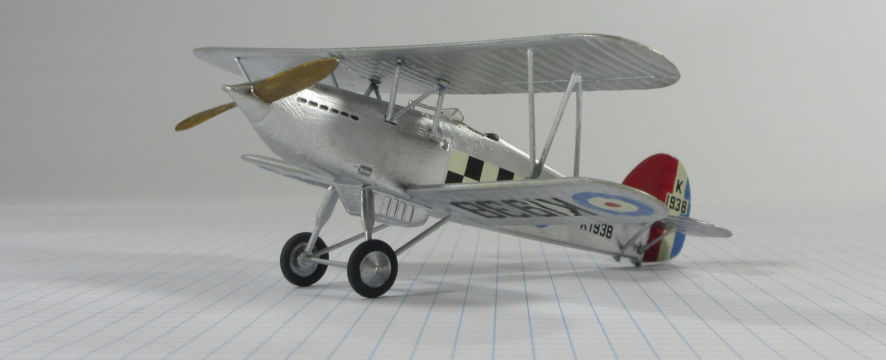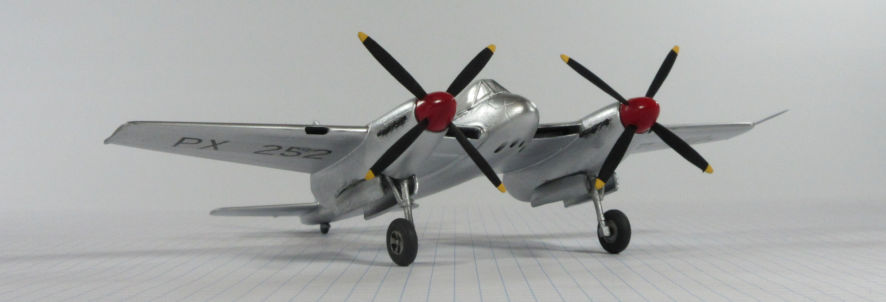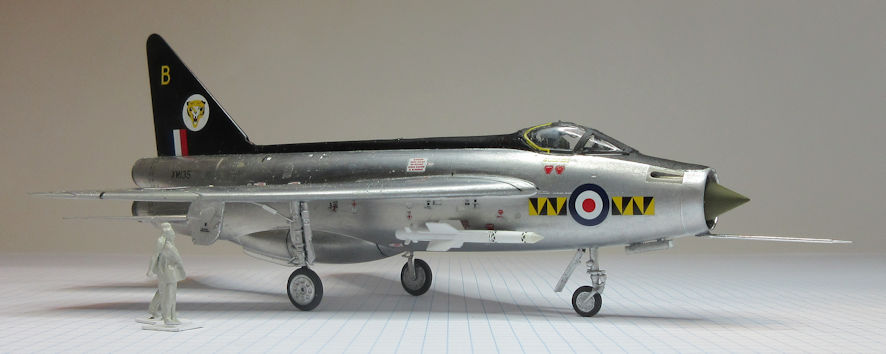Silver British Fighters
Hawker Fury, deHavilland Hornet, English Electric Lightning
The Gallery of British Aircraft houses many interesting aircraft that are always a pleasure to wander amongst. They are a snapshot of the rapid development of aviation in the 20th Century, especially in the first five or so decades when aeronautical knowledge expanded rapidly and the power of the engines that powered aeroplanes grew almost exponentially from, for example, from the 391kW of the Rolls Royce Kestrel engine that powered the Hawker Fury to the 1540kW Rolls Royce Merlin engine of the deHavilland Hornet and then the 64.2kN thrust of a Rolls Royce Avon jet engine. These engines gave the Fury a top speed of 359km/h, the Hornet a top speed of 764km/h and the Lightning a maximum speed of 1,825km hour. What an amazing change in only 30 years.
The Hawker Fury was designed in the late 1920s, entered service with the Royal Air Force in 1931 and still equipped some front line fighter squadrons in 1939. It was the first RAF fighter capable of flying faster than 200mph and was agile and good to fly so it was exported to several countries with a couple of different engines. However it was obsolete by the beginning of World War II and when a squadron of Yugoslavian Furies attacked invading German forces they were slaughtered.
This little Fury model was made using the Matchbox kit which was first issued at the beginning of the 1970s. It was Matchbox’s first kit. It went together simply and pleasantly and, although it might lack the detail of later injection moulded kits, it is still one of my favourite models because it gives a sense of the lightness and agility of the real thing. Later kits might have some other advantages but look heavy in comparison, which is not how I think a Fury should look.
The deHavilland Hornet looked similar in appearance to the famous deHavilland Mosquito and used a lot experience deHavilland had gained from the Mosquito, although it was an original design. It was a long range fighter designed to fight against Japanese forces in the Pacific but was too late for that role and entered Royal Air Force service in 1946. Although it was an excellent aircraft it was overshadowed by jet powered aircraft and served only until 1955.
This Special Hobby kit of the Hornet is not one of my greatest modelling memories or achievements. Most of the time problems during construction are due to builder error but I’m sure that this kit is to blame for many of the problems I had in putting it together. The only reason I’d recommend it is because it is considerably better than the ancient Frog kit of the Hornet and because it is such a beautiful aircraft that everyone should make a model of it.
The English Electric (later BAC) Lightning was Britain’s first supersonic fighter designed specifically to intercept attacking Russian bombers armed with atomic weapons. It’s task was to reach high altitude and high speed as rapidly as possible, but this resulted in it lacking many features necessary in a good general fighter, such as range and armament. Despite improvements over the years these fundamental problems remained, but that did not stop it from being one of the most magnificent looking flying machines ever made (in my opinion).
This model is made from the Trumpeter 1/72 kit which has its challenges. It is not the best Lightning kit on the market in this scale, that is the Airfix 1/72 Lightning F.6. However, if you want to make Lightnings in the other versions of this fighter the Trumpeter kits is preferable because it was released in the three major versions of Lightning fighters which make it possible to make all the versions without having to make major conversions. You will see this in practice when I have time to open the Special Display on the Lightning which will have over thirty different Lightnings in it.


